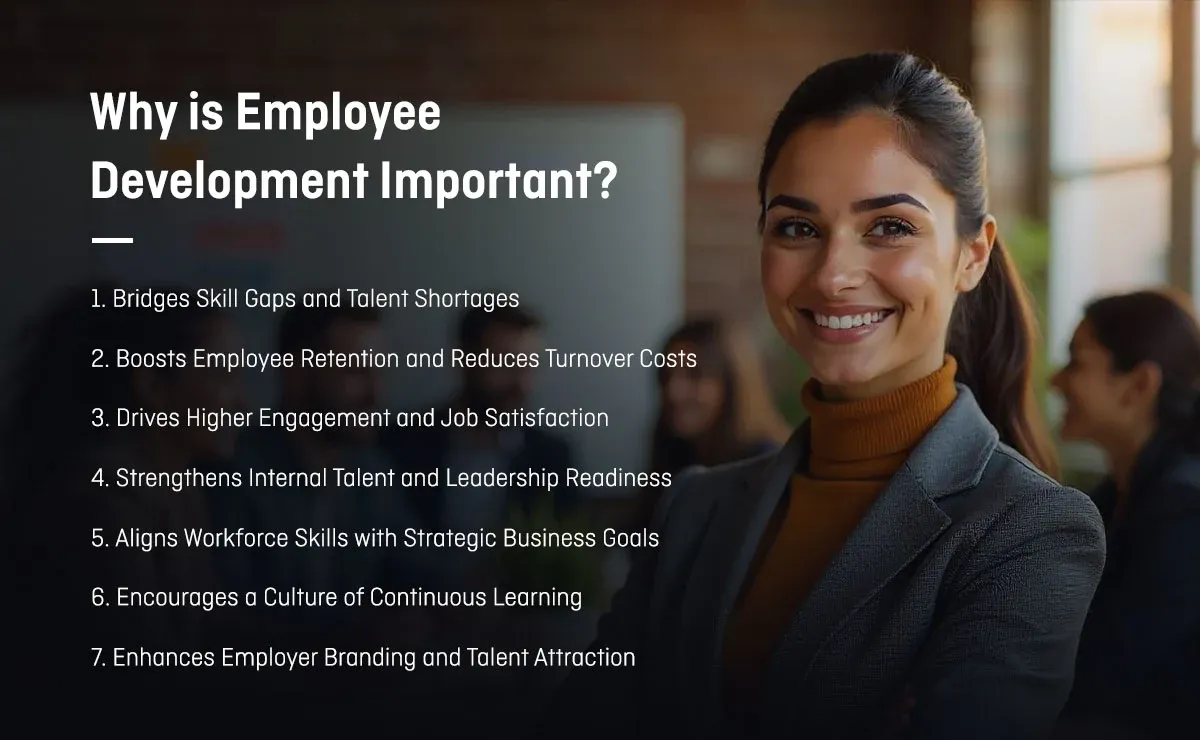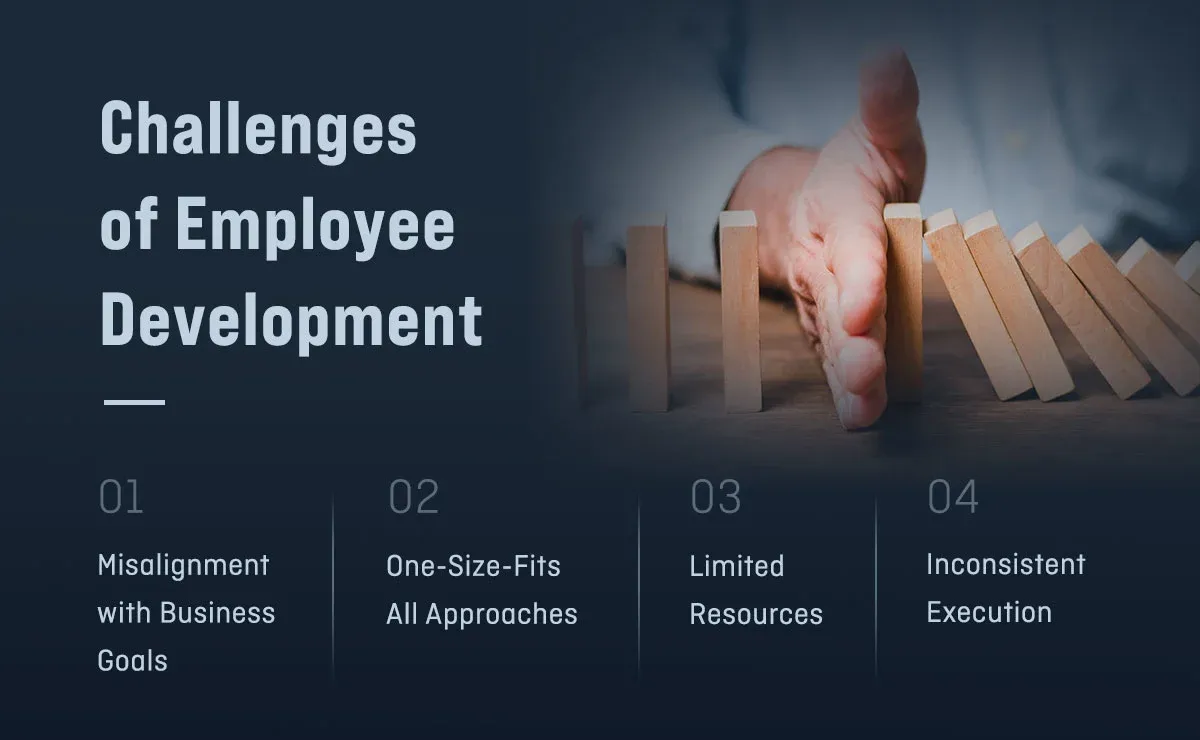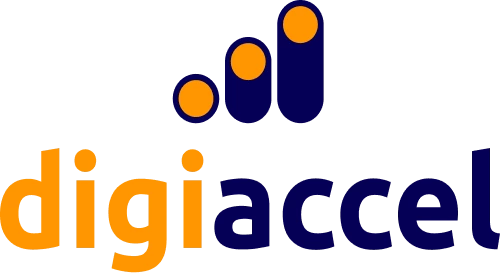What Is Employee Development?

Employee development is a cornerstone of modern organizational success, encompassing a range of activities aimed at enhancing employees' skills, knowledge, and competencies to meet both individual career goals and organizational objectives. It is a deliberate, continuous effort to enhance employees’ capabilities, improve performance, and prepare them for future responsibilities.
This article delves into the concept of employee development, exploring its definition, importance, current industry trends, benefits, types, implementation strategies, challenges, and practical solutions. Whether you’re a business leader, HR professional, or employee looking to grow your career, this guide is your roadmap to understanding and implementing effective employee development.
What Is Employee Development?
Employee development is a forward-thinking, continuous initiative where companies nurture their workforce to expand expertise, competencies, and potential. Rather than a one-time training event, it’s a holistic approach encompassing three core elements:
- Experience: Real-world assignments and stretch projects that push employees beyond their comfort zone, from leading a team initiative to piloting a new process.
- Exposure: Learning through observation and social interaction—job shadowing, mentorship, coaching circles, and cross-functional networking.
- Education: Formal learning opportunities such as courses, workshops, certifications, and e-learning modules.
For students studying human resources, organizational psychology, or business management, understanding employee development means appreciating how these three dimensions interlock to create a continuous learning culture. It’s not merely ticking off checkboxes on an annual review; it’s about mapping everyone's career journey and aligning it with the organization’s evolving needs.
Why is Employee Development Important?
Developing employees is critical for cultivating an adaptable, high-performing team prepared for tomorrow’s demands. In a rapidly evolving global economy, organizations must be agile, innovative, and equipped with the right talent to stay competitive. This growth hinges on workers consistently upgrading their skills to tackle evolving business needs. Here’s why employee development holds such critical importance:

Bridges Skill Gaps and Talent Shortages
With industries evolving due to automation, digital transformation, and shifting market demands, many companies face significant skill shortages. Rather than hiring externally, which is costly and time-consuming, upskilling current employees is often a more efficient solution. Development programs equip existing team members with new competencies, filling internal talent gaps while preserving institutional knowledge.
Boosts Employee Retention and Reduces Turnover Costs
The expense of replacing a staff member can reach double their yearly pay, factoring in hiring, training, and operational disruptions. Employee development directly combats this by giving individuals a reason to stay. According to LinkedIn’s Workplace Learning Report, 94% of employees say they would stay longer at a company that invests in their learning and development. When employees see a clear path for advancement, they’re less likely to seek opportunities elsewhere.
Drives Higher Engagement and Job Satisfaction
Development opportunities demonstrate to employees that their company values them, not just for the job they do today, but for the potential they bring in the future. This fosters greater engagement, motivation, and loyalty. Engaged employees are more productive, show greater initiative, and contribute more meaningfully to organizational success.
Strengthens Internal Talent and Leadership Readiness
An effective development program allows organizations to build strong internal talent pipelines, especially for leadership roles. Instead of relying solely on external hires for managerial positions, companies can promote from within—ensuring leaders are already aligned with the company’s values and culture. This strengthens succession planning and ensures long-term business continuity.
Aligns Workforce Skills with Strategic Business Goals
When development is strategically designed around organizational objectives, it enables businesses to stay agile and focused. As industries change and priorities shift, a well-developed workforce can pivot accordingly. This alignment ensures that employees aren’t just skilled; they’re skilled in ways that matter most to the company’s growth.
Encourages a Culture of Continuous Learning
Companies fostering development weave learning into everyday workflows, sparking innovation while equipping teams for technological and role-based shifts. In an age of constant disruption, continuous learning becomes a competitive advantage.
Enhances Employer Branding and Talent Attraction
Top talent wants to work for companies that prioritize career growth. A visible, well-structured development program makes your company more attractive to job seekers—especially younger generations who place high value on learning and development opportunities. Such investment also elevates your brand as a top-tier workplace in the competitive talent market.
Employee Development Industry Trends
The landscape of employee development is evolving, influenced by technological advancements and changing workforce demographics. Key trends include:
Social and Collaborative Learning Ecosystems
Digital platforms like internal forums, chat channels, and shared knowledge bases enable employees to ask questions, share best practices, and solve problems together in real time. This collaborative framework speeds up knowledge sharing and strengthens team bonds through shared learning.
Hyper-Personalized Learning Journeys
AI-powered systems now recommend courses, videos, and articles tailored to everyone's role, skill gaps, and career aspirations. By delivering precisely the right content at the right time, organizations maximize engagement and ensure every learner tackles the most relevant development activities.
Career Lattices and Skill Pathways
Rather than a single “up-only” ladder, companies are mapping out multiple lateral and diagonal moves, like rotations, special projects, and cross-functional assignments, that broaden employees’ expertise. This flexible architecture helps people explore new interests without getting stuck in a rigid hierarchy.
Blended Specialist-Generalist Tracks
Development frameworks now offer parallel paths into deep technical certifications and focused classes for specialists, alongside rotational experiences and leadership modules for generalists. This dual approach ensures the organization cultivates both expert practitioners and versatile multi-skill contributors.
Micro-Learning and Just-In-Time Interventions
Instead of half-day workshops, learning is broken into 3–5-minute quick videos known as “nuggets”, infographics, or interactive quizzes deployed exactly when needed (e.g., a sales tip right before a client call). By providing bite-sized content at the point of need, retention soars and learners can immediately apply new techniques to real work scenarios.
Immersive Technologies (VR, AR, and Simulations)
Virtual and augmented reality environments allow learners to practice complex, high-risk tasks like piloting machinery, handling emergency scenarios, or conducting soft-skills role-plays in a safe, repeatable setting. These realistic simulations deepen retention and build confidence.
Data-Driven Learning Analytics
Advanced dashboards track not only completion rates but also real-world outcomes like performance improvements, project success, and retention impacts. By linking learning investments directly to business metrics, L&D leaders can pinpoint which programs deliver the greatest return.
Diversity, Equity & Inclusion (DE&I) Centered Development
Programs are being designed with deliberate attention to equitable access, ensuring underrepresented groups receive sponsorships, stretch assignments, and mentoring. Embedding diversity and inclusion into learning pathways strengthens culture, drives innovation, and mirrors the diverse markets organizations serve.
Benefits of Employee Development
Investing in employee development delivers a powerful multiplier effect across every level of an organization. When individuals grow, the entire business thrives. Key benefits include:
- Enhanced Performance and Productivity: Targeted training and hands-on learning experiences sharpen employees’ skills, reducing errors and accelerating task completion. Groups trained in methods and tools reliably achieve better results than those lacking systematic development.
- Higher Engagement and Job Satisfaction: Offering growth paths signals organizational commitment to employees’ long-term success. Employees who see a clear path to advancement feel more invested in their work and are willing to go the extra mile, boosting overall motivation and discretionary effort.
- Stronger Retention and Reduced Turnover Costs: Replacing a skilled employee can cost 200% of that individual’s annual salary in recruiting, onboarding, and lost productivity. By upskilling existing staff and offering clear growth trajectories, organizations significantly lower attrition rates—and the associated financial and cultural disruption.
- Robust Internal Talent Pipelines: Structured development programs identify and prepare high-potential employees for leadership and specialized roles. Strategic succession planning through development safeguards stability, prevents leadership voids, and retains critical expertise.
- Fostered Culture of Innovation: Continuous learning environments encourage experimentation and creative problem-solving. As employees gain exposure to new ideas and technologies, they bring fresh perspectives to their roles—driving through process improvements, product enhancements, and new revenue streams.
- Improved Employer Brand and Talent Attraction: A reputation for investing in people makes an organization more attractive to ambitious candidates. In competitive markets, companies known for their commitment to employee growth stand out, drawing in top talent who seek long-term career development.
- Greater Organizational Agility: In today’s fast-changing business landscape, the ability to pivot quickly is critical. A continuously upskilled team stays agile—ready to embrace new tech, explore markets, or pivot with customer trends.
By integrating employee development into their strategic blueprint, organizations not only elevate individual careers but also create a more resilient, innovative, and high-performing enterprise.
Types of Employee Development Methods
Effective employee development programs leverage a mix of learning approaches that address different styles, timelines, and business needs. The most used methods include:
- On-the-Job Training: Employees acquire new skills by performing actual tasks under the supervision of an experienced colleague or manager. Real-time feedback turns workplace challenges into learning opportunities, and employees immediately apply what they learn.
- Mentoring: In this relationship-based model, a more seasoned professional guides a less experienced colleague over an extended period. Regular meetings cover career advice, technical know-how, and insights into company culture, helping mentees navigate their roles with greater confidence.
- Coaching: More performance-focused than mentoring, coaching typically involves a trained coach (internal or external) who works closely with an employee to develop specific competencies or overcome obstacles. Sessions are structured around clear goals and measurable progress.
- Workshops and Seminars: Instructor-led classes, whether in a classroom or online, provide deep dives into topics such as leadership, project management, compliance, or customer service. Sessions frequently incorporate real-world scenarios, team activities, and dynamic dialogues to solidify learning.
- Digital Learning and Bite-Sized Modules: Online platforms provide flexible, on-demand training accessible anywhere. Micro-learning breaks content into short modules like videos, quizzes, or infographics that employees complete in just a few minutes whenever they need targeted refreshers.
- Job Rotation and Cross-Training: Short-term assignments in different departments expose employees to new functions, broaden their skill sets, and build a deeper understanding of the business. This method supports the career lattice model by offering lateral development opportunities.
- Simulations and Role-Playing: Virtual reality (VR), augmented reality (AR), or in-person role-play scenarios allow learners to practice complex or high-stakes tasks such as crisis management or sales negotiations in a safe, repeatable environment.
- Individual Development Plans (IDPs): Co-created roadmaps that document an employee’s strengths, development areas, career goals, and the specific learning activities, timelines, and success metrics needed to achieve them. IDPs provide structure and accountability.
By blending practical experience with coaching, formal instruction, and self-directed learning, organizations create a well-rounded development ecosystem. Blending methods guarantees staff acquire relevant competencies for immediate and future demands.
How to Create an Effective Employee Development Program?
Crafting an impactful development program requires meticulous strategy, transparent dialogue, and iterative improvements. Follow these steps to build a program that aligns individual growth with organizational goals:
- Assess Strategic Priorities: Begin by identifying your organization’s key objectives. Are you aiming to accelerate digital transformation, cultivate future leaders, or improve customer experience? Pinpoint the critical skills and competencies that will drive those goals. Syncing learning objectives with corporate goals ensures tangible ROI from every initiative.
- Diagnose Skill Gaps: Use performance reviews, 360-degree feedback, skills assessments, and team-level data to understand where your workforce currently stands. Look for recurring areas of weakness or emerging needs, such as data literacy or remote-team collaboration. A clear gap analysis creates a solid foundation for targeted development.
- Define Measurable Goals: Define measurable targets for participants and the program’s overarching impact. For example, aim to increase leadership-readiness in your mid-level managers by 30% within six months, or ensure all customer-facing staff complete advanced communication training by year-end. Concrete targets drive accountability and help you measure success.
- Co-Create Individual Development Plans: Invite each employee to participate in crafting their own development roadmap. Together with their manager, they should identify career aspirations, chart the skills they need to acquire or sharpen, and select a mix of learning methods.
- Offer a Diverse Learning Portfolio: No single method suits everyone. Combine hands-on assignments, social learning, formal workshops, micro-learning modules, mentoring, and coaching to address varied learning styles and time constraints. This multi-modal approach keeps engagement high and reinforces knowledge through different perspectives.
- Secure Resources and Manager Support: Allocate a clear budget, dedicate time to learning (for example, one afternoon per month), and equip managers with coaching skills. When supervisors actively encourage development, provide constructive feedback, and remove obstacles, employees feel empowered to learn and experiment.
- Leverage Technology: Implement a modern learning platform that recommends personalized content, tracks progress and offers social collaboration features. Effective technology streamlines administration, provides data insights, and makes learning accessible on any device—whether in the office or remote.
- Communicate with the Program Widely: Promote your development initiative through newsletters, town hall presentations, and manager briefings. Share success stories and recognize early adopters to build momentum. Transparent communication about advantages, schedules, and participation criteria drives organization-wide participation.
- Monitor Progress and Gather Feedback: Regularly review key metrics—course completion rates, project outcomes, leadership-pipeline growth, and employee surveys—to assess how well the program is performing. Host periodic check-ins with participants and their managers to surface challenges or ideas for improvement.
- Iterate and Scale: Use the data and feedback you collect to refine content, adjust delivery methods, and expand successful elements into new teams or regions. By continuously iterating, you keep the program fresh, relevant, and tightly aligned with evolving business needs.
Challenges of Employee Development
Though employee development offers significant benefits, execution presents distinct hurdles. Organizations must be prepared to navigate these obstacles to ensure their programs remain effective, scalable, and aligned with long-term goals.

- Misalignment with Business Goals: A common pitfall is rolling out generic training that isn’t aligned with the company’s strategic direction. Training initiatives must focus on the exact abilities and expertise needed to address both present and upcoming organizational demands. Even the most sophisticated program will fall short if it isn’t tightly aligned with these priorities.
- One-Size-Fits-All Approaches: Employees have different roles, learning styles, career goals, and starting skill levels. When organizations offer rigid, standardized development options, they often fail to address individual needs. Personalized development plans are more effective in encouraging growth and retention.
- Limited Resources: Resource limitations—time, funding, and staffing—often hinder sustainable program development. Especially in smaller organizations, learning initiatives are often underfunded or deprioritized in favor of more immediate operational tasks.
- Inconsistent Execution: Even if the development strategy is solid, poor execution can undermine its effectiveness. For example, if some departments embrace the program while others ignore it, the result is an uneven experience that can create confusion and disengagement among employees.
FAQs
Q1. What are the 4 stages of employee development?
Ans: The four phases of employee development include:
- Onboarding – Acclimating to organizational culture and expectations.
- Training – Learning job-specific skills.
- Development – Gaining new skills for growth.
- Retention – Preparing for leadership or long-term roles.
Q2. What is employee skills development?
Ans: It’s the process of improving and expanding an employee’s abilities to perform better or take on new roles. This includes technical, soft, leadership, and role-specific skills gained through training, coaching, mentoring, or on-the-job experiences.
Q3. What defines the 5 Cs of employee engagement?
Ans: The 5 Cs of employee engagement are:
- Care
- Connect
- Coach
- Contribute
- Congratulate
These represent key areas that drive motivation and commitment to work.
Summing Up
Employee development is a vital component of organizational success, offering benefits that extend beyond individual growth to encompass improved performance, innovation, and competitiveness. For students entering the workforce, understanding and engaging in development opportunities can significantly impact career trajectories.
As you step into internships, co-op roles, or your first HR positions, remember that fostering growth in others starts with understanding their unique goals, providing tailored learning journeys, and measuring impact relentlessly.

